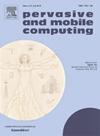AerialDB:无人机编队的联邦点对点时空边缘数据存储
IF 3.5
3区 计算机科学
Q2 COMPUTER SCIENCE, INFORMATION SYSTEMS
引用次数: 0
摘要
近年来,利用无人机互联网的最新计算范式的研究出现了前所未有的爆炸式增长,该范式由一组连接的无人机(uav)组成,用于广泛的任务,例如在高度移动和不断变化的灾区环境中进行监测和分析。考虑到在这种情况下部署的无人机编队收集的典型数据(即视频和图像)可能比机载计算机可以处理的数据大得多,无人机需要将其数据实时卸载到边缘和云端进行进一步处理。为此,我们提出了AerialDB的设计,这是一个轻量级的分散数据存储和查询系统,可以在多无人机系统上存储和处理时间序列数据,该系统包括:(a)配备机载计算机的数百架无人机的机队,以及(B)通过蜂窝链路连接的地面边缘服务器。利用基于内容的副本放置和碎片索引的轻量级技术,AerialDB已经进行了优化,可以有效地处理现实世界灾难管理应用程序执行的典型空间和时间查询的不同可能组合。通过使用多达400架无人机和80个边缘的容器化部署,我们证明了AerialDB能够有效扩展,同时在不同的实际工作负载下提供接近实时的性能。此外,AerialDB包括一个分散的、位置感知的分布式执行引擎,在处理大型时空数据时,它在边缘故障时以相对较低的延迟提供优雅的性能降级。AerialDB展示了相当的插入性能和100倍于最新基线的查询性能提升。此外,在云基准上,插入工作负载的性能提高了10倍,查询工作负载的性能提高了100倍。本文章由计算机程序翻译,如有差异,请以英文原文为准。
AerialDB: A federated peer-to-peer spatio-temporal edge datastore for drone fleets
Recent years have seen an unprecedented explosion in research that leverages the newest computing paradigm of Internet of Drones comprised of a fleet of connected Unmanned Aerial Vehicles (UAVs) used for a wide range of tasks such as monitoring and analytics in highly mobile and changing environments characteristic of disaster regions. Given that the typical data (i.e., videos and images) collected by the fleet of UAVs deployed in such scenarios can be considerably larger than what the onboard computers can process, the UAVs need to offload their data in real-time to the edge and the cloud for further processing. To that end, we present the design of AerialDB- a lightweight decentralized data storage and query system that can store and process time series data on a multi-UAV system comprising: (A) a fleet of hundreds of UAVs fitted with onboard computers, and (B) ground-based edge servers connected through a cellular link. Leveraging lightweight techniques for content-based replica placement and indexing of shards, AerialDB has been optimized for efficient processing of different possible combinations of typical spatial and temporal queries performed by real-world disaster management applications. Using containerized deployment spanning up to 400 drones and 80 edges, we demonstrate that AerialDB is able to scale efficiently while providing near real-time performance with different realistic workloads. Further, AerialDB comprises a decentralized and locality-aware distributed execution engine which provides graceful degradation of performance upon edge failures with relatively low latency while processing large spatio-temporal data. AerialDB exhibits comparable insertion performance and 100 times improvement in query performance against state-of-the-art baseline. Moreover, it experiences a 10 times improvement in performance with insertion workloads and 100 times improvement with query workloads over the cloud baseline.
求助全文
通过发布文献求助,成功后即可免费获取论文全文。
去求助
来源期刊

Pervasive and Mobile Computing
COMPUTER SCIENCE, INFORMATION SYSTEMS-TELECOMMUNICATIONS
CiteScore
7.70
自引率
2.30%
发文量
80
审稿时长
68 days
期刊介绍:
As envisioned by Mark Weiser as early as 1991, pervasive computing systems and services have truly become integral parts of our daily lives. Tremendous developments in a multitude of technologies ranging from personalized and embedded smart devices (e.g., smartphones, sensors, wearables, IoTs, etc.) to ubiquitous connectivity, via a variety of wireless mobile communications and cognitive networking infrastructures, to advanced computing techniques (including edge, fog and cloud) and user-friendly middleware services and platforms have significantly contributed to the unprecedented advances in pervasive and mobile computing. Cutting-edge applications and paradigms have evolved, such as cyber-physical systems and smart environments (e.g., smart city, smart energy, smart transportation, smart healthcare, etc.) that also involve human in the loop through social interactions and participatory and/or mobile crowd sensing, for example. The goal of pervasive computing systems is to improve human experience and quality of life, without explicit awareness of the underlying communications and computing technologies.
The Pervasive and Mobile Computing Journal (PMC) is a high-impact, peer-reviewed technical journal that publishes high-quality scientific articles spanning theory and practice, and covering all aspects of pervasive and mobile computing and systems.
 求助内容:
求助内容: 应助结果提醒方式:
应助结果提醒方式:


